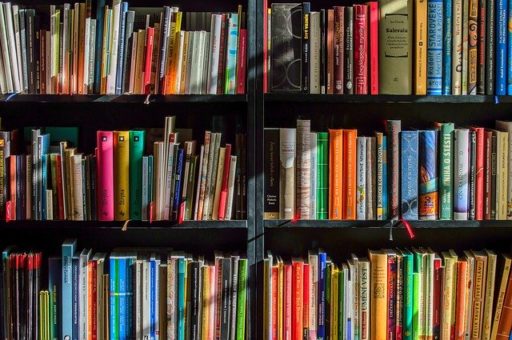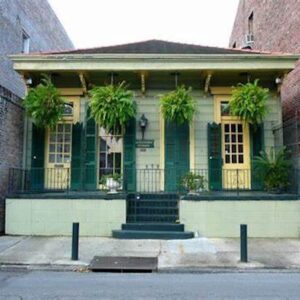Last week, I did something I thought I probably would never do at all.
I hired an interior decorator.
Hiring an interior decorator was something that only other people did—such as my Southern friends who might draw on the resources of fellow sorority sisters along the azalea-lined streets of New Orleans, Baton Rouge, or Jackson.
Or my super-rich friends from boarding school, who’d studied the “best of what has been known and thought,” only to go into private equity and cover their windows in acres of F. Schumacher chintz.
What finally pushed me over the edge of sanity was trying to figure out a new paint color for the living room. For years, I had come home with paint swatches from across the price spectrum, taped them to the wall, then let them fall to the ground like leaves as I continued on, being unable to settle on a color, sicklied-over-with-the-pale-cast-of-thought. Through recommendations from friends, I found a fabulous expert right in the neighborhood—a California Persian who’d come to town via Capitol Hill Baptist Church—who arrived one night right before a large thunderstorm and started helping me hack my way through the forest of my confusion. Within twenty minutes, we’d figured out colors, and were on to other strategies for renewal.
Except for one thing, I told her. You can’t touch the books.
There are only a few dozen books in the living room, split between two bookcases.
That’s nothing on the several hundred in the basement and the two thousand or so on the big black IKEA unit in our bedroom, where they’re double- and triple-shelved in each of its twenty-five sections.
I guess I do have a lot of books, I think, and shrug my shoulders.
But it’s not something I have tended to think is even that big a deal, and that catches me short sometimes. One of my relatives will periodically tag me on these Facebook memes—“Book Woman” and “Don’t Talk; I’m Reading!”—as a gesture of affirmation.
I know that this is meant as a compliment, but I bristle at it anyway—it’s as though having books is something endearingly peculiar, like collecting nineteenth century decorative oyster plates. Or an element of personal branding, like that “evangelical bridesmaid” cursive font or the way that Delta Gammas dig sailboats and Delta Sigma Thetas elephants.
It’s. Not. A. Collection. They’re just books!
I grew up in a house with many books, shoved like tight little soldiers onto inadequate shelves. The books themselves were entirely indiscriminate—well-loved editions of Jane Eyre and Wuthering Heights with frightening woodcut illustrations; The God That Failed (about modern architecture?); mass-market paperbacks like Jaws and Jackie Oh!; and Bircher anomalies like None Dare Call It Conspiracy that somebody had given my parents.
My family were educated but not intellectual, and later on I came to emulate the great expanses of built-in bookcases in New York City apartments, filled with heady books (Proust; Musil) and with the occasional silver-framed photograph or engraved invitation propped up against them.
It wasn’t until much later on that I figured out that, for most people, “bookcases” were not primarily about books at all. My mother had been entirely too literal in her thinking. Instead, bookcases were backdrops, staging grounds for assembling lifestyle vignettes.
You know what I mean—to create one of these, you arrange some volumes by stacking them up on their sides, then stand up a clump of others vertically. Then, on the expanse of space in between, the goal is to display a series of “decorative items.”
These can evoke any part of the culture you want: sea glass, Lladro figurines, Six Million Dollar Man tin lunchboxes from the 1970s.
Now how come I never learned about this?
I can fake it now, but this kind of staging is never going to be intuitive for me. Especially since the conventions of display have grown only more nuanced in recent decades—culminating most recently in the trend of organizing books by color.
Two New Year’s Eves ago, right after heading to the Apple store to buy a new computer (a detail that seems significant to me now), I finally cleaned out the big IKEA bookcase in my bedroom for the first time in several years.
Compartment by compartment, I pulled out the first, second, and even sometimes third rows of books, dusted each off, then cleaned the shelf off with Windex. The backs of the shelves were furred with gray clouds of dust, which clung to the books like tendrils of Spanish moss.
I got rid of some Christian paperbacks and diet books, and the prepublication galley copies that my husband and I had gotten for free at work.
The shelves were like an archeology of my history, and the phases of life in our family. I realized that I had still never finished reading Moby Dick (a damned embarrassment for an American Studies major), and I had not yet read A Cricket in Times Square to my daughter. I found a couple of books that I thought I had lost, and of which I had already bought other copies. Well, I thought, now I have two of each!
I couldn’t imagine getting rid of any of them.
But even as I say that, I still hear the voices in my head, with all the talk about “hoarding” and “clutter.” A few years ago I was at a neighborhood friend’s house for drinks with a couple of women, all with master’s degrees and professional jobs, and for a good twenty minutes, all the talk was about what a drag books were and how messy they made a room look. I sat there in silence, mourning, as though somebody had stabbed my dog.
I read somewhere that Americans tended to think of their cars as extensions of their bodies, rather than as tools to get from one place to the next. I suppose I internalized that about books—to touch the vintage copy of Ulysses that my college boyfriend gave me is to stroke the hair of my younger self, whom I now wish I could console, and reassure.
And in my assholish moments, I have been in other people’s houses and thought about saying, “Hey, where do you keep all your books?” knowing really that they probably don’t have any. But where are the books?
Because it seems like the body is missing.
Caroline Langston was a regular contributor to Image’s Good Letters blog, and is writing a memoir about the U.S. cultural divide. She has contributed to Sojourners’ God’s Politics blog, and aired several commentaries on NPR’s All Things Considered, in addition to writing book reviews for Image, Books and Culture, and other outlets. She is a native of Yazoo City, Mississippi, and a convert to the Eastern Orthodox Church. She lives outside Washington, D.C., with her husband and two children.





